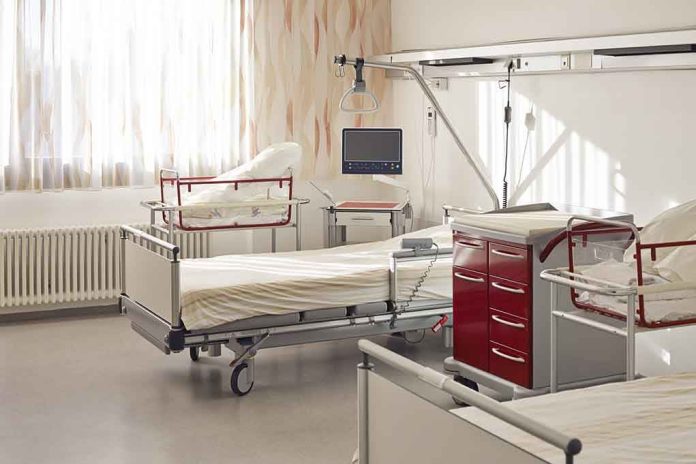
A Legionnaires’ outbreak in Harlem exposes the vulnerabilities of urban infrastructure and the pressing need for effective disease control.
Story Highlights
- Three deaths and nearly 70 cases reported in Harlem due to Legionnaires’ disease.
- Outbreak traced to contaminated cooling towers across five ZIP codes.
- City officials and health departments urge at-risk residents to seek medical attention.
- Remediation efforts are underway, with tap water confirmed safe.
Harlem’s Public Health Crisis: A Growing Concern
Since July 25, 2025, Central Harlem has been grappling with a Legionnaires’ disease outbreak, resulting in three deaths and nearly 70 confirmed cases. The outbreak has been attributed to contaminated cooling towers in five distinct ZIP codes. City officials, led by Mayor Eric Adams, have identified the source and are urging residents, particularly those at risk, to seek medical attention promptly. The situation underscores the critical importance of effective disease control in densely populated urban areas.
The current situation in Harlem is a stark reminder of the vulnerabilities inherent in urban infrastructure. Legionnaires’ disease, a severe form of pneumonia caused by Legionella bacteria, typically spreads through inhalation of contaminated water vapor. The disease, not transmitted from person to person, has seen a rising trend in the U.S., particularly in the Northeast, over the past two decades. This outbreak, following similar incidents in New York City’s past, highlights the urgent need for stringent monitoring of building water systems.
City’s Response and Remediation Efforts
The NYC Department of Health and Mental Hygiene (DOHMH) has been at the forefront of managing this outbreak. Since the first cases were detected, the health department has been working tirelessly to investigate and contain the spread. Their efforts included environmental testing, which identified Legionella bacteria in 11 cooling towers. Prompt remediation of these towers has been completed, and ongoing monitoring aims to ensure the safety of residents and prevent further spread.
Public health officials have assured the public that the outbreak is contained to specific buildings, emphasizing that the general public is not at risk unless directly exposed to the contaminated towers. This assurance comes amid heightened public anxiety and increased demand for medical attention in Harlem, particularly from vulnerable populations such as older adults and those with chronic health issues.
Implications and Future Outlook
The outbreak’s impact reaches beyond immediate health concerns. Economically, the costs associated with remediation and healthcare are significant, and there is potential for litigation against non-compliant building owners. Socially, fear and stigma may disrupt affected neighborhoods. Politically, the city’s preparedness and response are under scrutiny, which could prompt stricter regulations on building maintenance practices citywide.
Third person dies in Harlem Legionnaires’ outbreak that has sickened nearly 70, Adams says https://t.co/oLtOwg4mv4
— ConservativeLibrarian (@ConserLibrarian) August 6, 2025
Looking ahead, this crisis could lead to increased public awareness of Legionnaires’ disease and stronger regulations to prevent future outbreaks. Medical professionals and public health experts emphasize the importance of early detection, treatment, and robust environmental controls. These measures are critical not only for reducing mortality but also for safeguarding public health in urban environments.
Sources:
Harlem World Magazine, Aug 6, 2025
NYC Health Department, Aug 4, 2025





